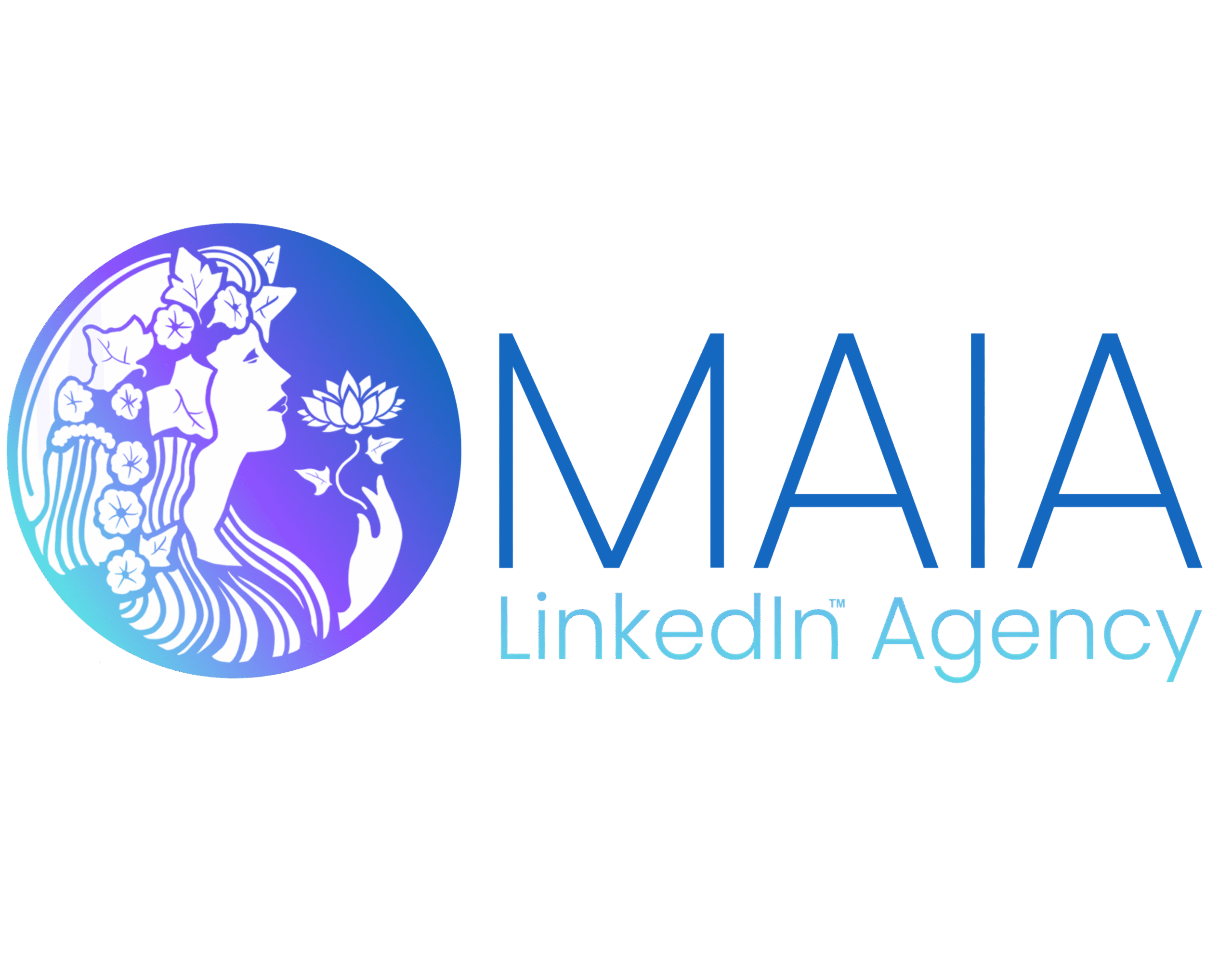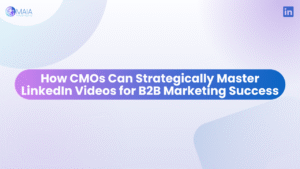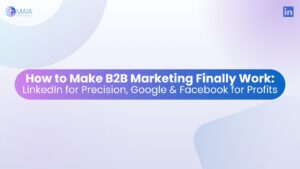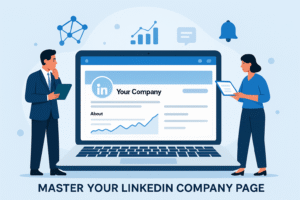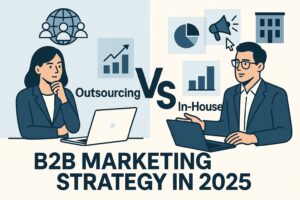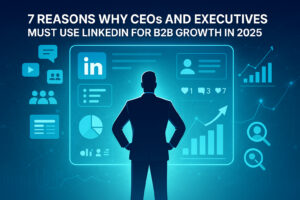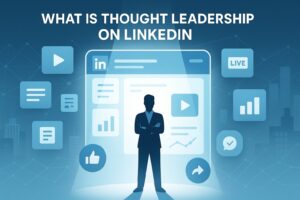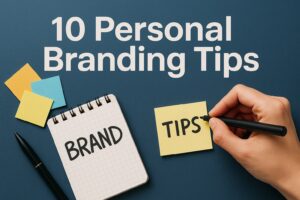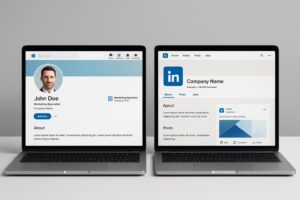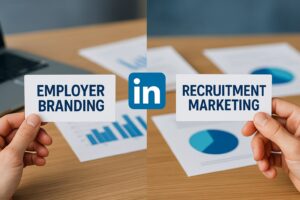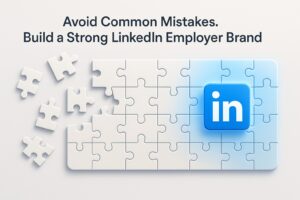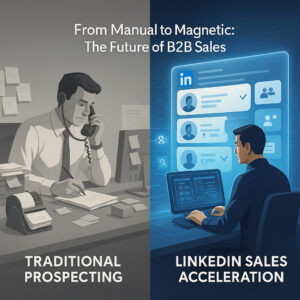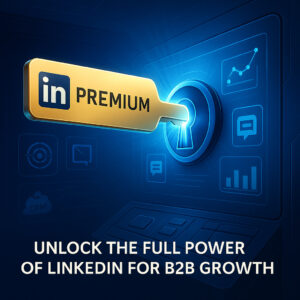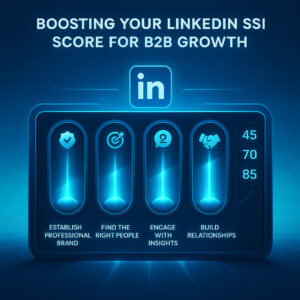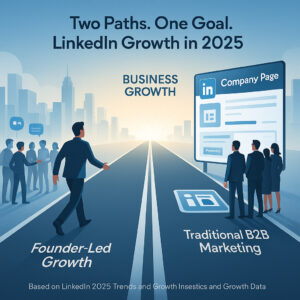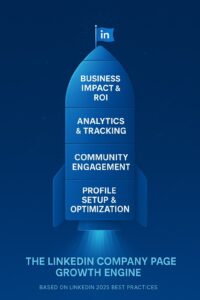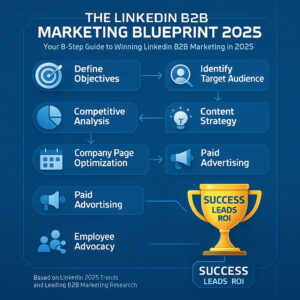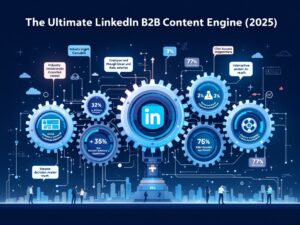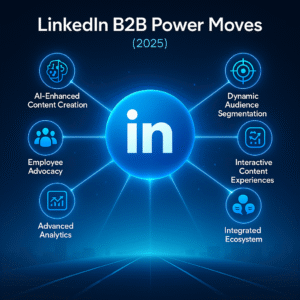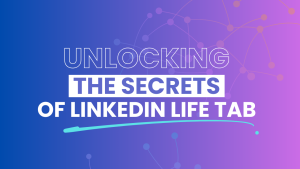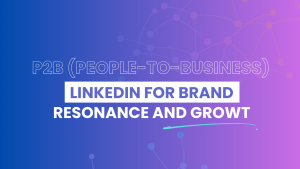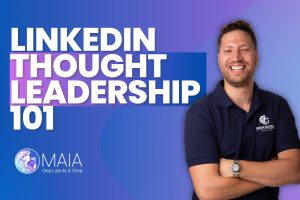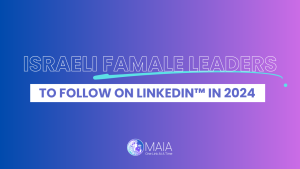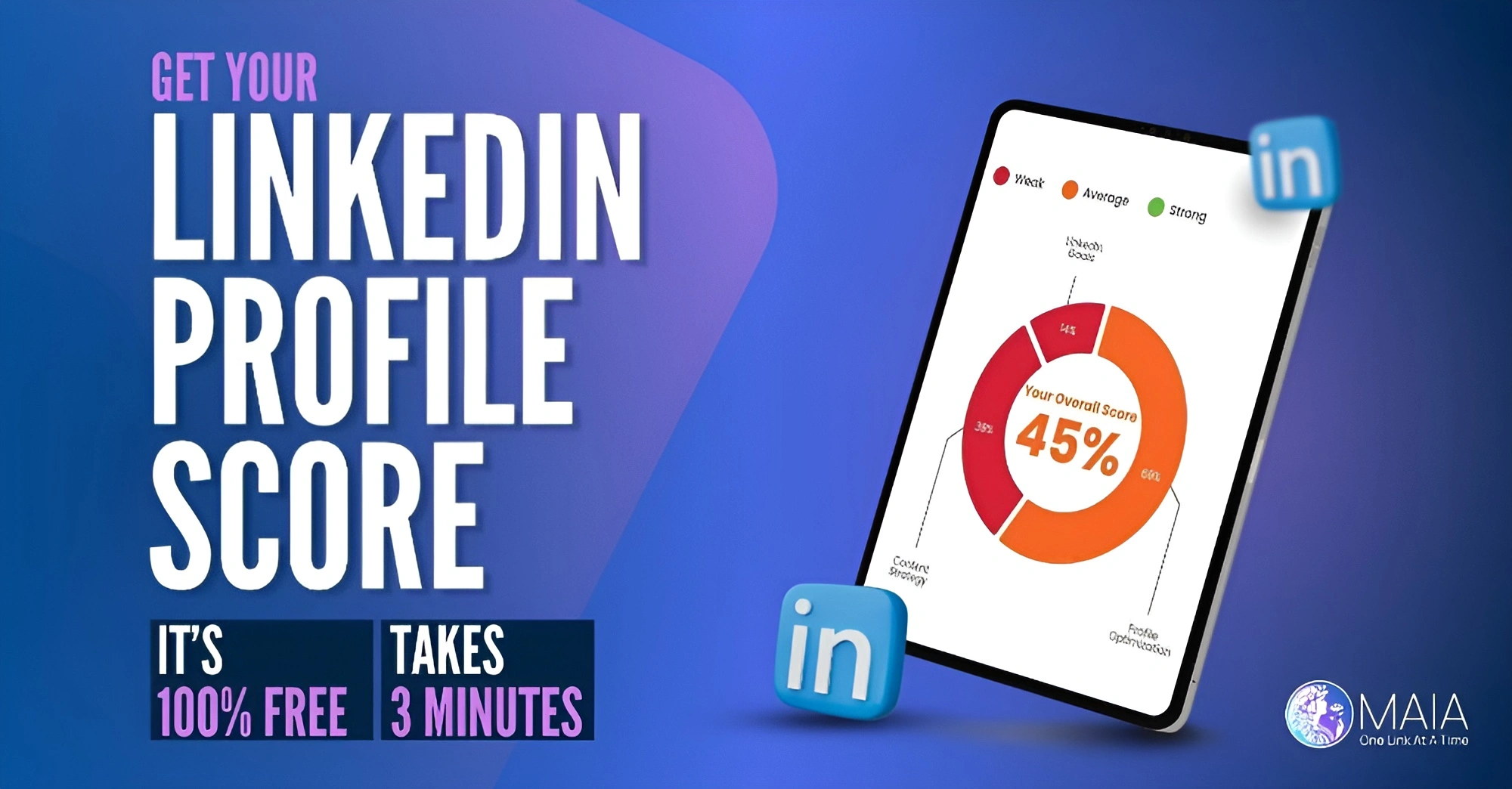LinkedIn B2B Content Ideas That Drive Engagement and Leads
LinkedIn has cemented its position as the premier platform for B2B marketing, with recent data showing that 96% of B2B marketers use LinkedIn for organic content distribution—higher than any other platform. More importantly, 80% of B2B leads generated from social media come directly from LinkedIn.
The challenge isn’t whether to use LinkedIn—it’s how to cut through the increasing noise with content that genuinely resonates with your target audience and drives measurable results.
Based on the latest research and platform trends from 2023-2025, we’ve compiled the most effective LinkedIn content strategies that are generating real engagement and qualified leads for B2B companies across industries.
Why LinkedIn Content Strategy Matters More Than Ever
According to LinkedIn’s own 2025 Marketing Solutions Report, user engagement on the platform has increased by 31% since 2023, while the average time spent per user has grown to 35 minutes daily—a significant jump from previous years.
This heightened activity means more opportunity, but also more competition. Recent analysis by HubSpot reveals that companies posting at least 3-4 times per week on LinkedIn see a 2x higher engagement rate than those posting once weekly or less.
But quantity alone isn’t the answer. The content types that drive engagement have evolved significantly.
Top-Performing LinkedIn B2B Content Ideas for 2025
1. Industry Insight Carousels
LinkedIn carousels have emerged as one of the highest-performing content types, with a 2024 Oktopost study finding they generate 3x more engagement than single-image posts. What makes carousels particularly effective is their ability to deliver substantial information in digestible segments.
The most successful B2B carousels typically include:
- Industry trend analysis with supporting data
- Step-by-step process breakdowns
- Comparison charts of solutions or methodologies
- Visual case study summaries
Research from LinkedIn’s Algorithm Analysis report (2025) shows that carousels with 7-9 slides see the highest completion rates, and those that pose a question in the first slide experience 27% higher engagement.
2. Original Research and Data Stories
In a sea of opinions, original data stands out dramatically. The 2025 Edelman LinkedIn B2B Thought Leadership Impact Study found that 76% of decision-makers are more likely to consider companies that regularly publish original research.
Effective approaches include:
- Surveys of your customer base with insightful analysis
- Benchmark reports comparing industry standards
- Data visualization of complex industry trends
- Annual state-of-the-industry reports
When sharing research, breaking it into multiple posts creates an extended engagement cycle and drives more traffic to full reports—typically generating 4x more leads than promotional content, according to Content Marketing Institute’s 2024 B2B Content Marketing Report.
Need help developing a data-driven content strategy for your LinkedIn presence? Our team specializes in creating research-backed content that positions your brand as an industry authority.
3. Employee-Led Thought Leadership
The 2024 LinkedIn Algorithm Update significantly prioritized authentic, individual voices over branded content. Posts from individual employees now typically receive 2-3x more reach than identical content posted from company pages.
According to the 2025 Sprout Social Index, B2B companies with active executive thought leadership programs generate 45% more qualified leads through LinkedIn than those relying solely on company page activity.
Effective employee thought leadership content includes:
- Personal perspectives on industry challenges
- Behind-the-scenes insights into roles and projects
- Career journey lessons and professional growth stories
- Expert commentary on trending industry news
The key is authenticity—LinkedIn’s 2025 Content Engagement Study found that thought leadership posts written in a conversational, first-person tone average 56% higher engagement than formal, corporate-sounding content.
4. Client Success Documentaries
Case studies have evolved beyond static PDFs. The most engaging B2B case content now follows documentary-style storytelling approaches across multiple formats.
LinkedIn video content featuring client testimonials and success stories achieves 59% higher engagement than traditional promotional videos, according to a 2024 Vidyard B2B Video Benchmark Report.
Modern B2B case content that drives engagement:
- Mini-documentary videos featuring client interviews (60-90 seconds)
- Before/after transformation posts with specific metrics
- Problem-solution-result carousel posts
- Client quote graphics with powerful results statements
The most effective approach is creating a content series that tells the full client story across multiple posts and formats, maximizing engagement over time rather than in a single post.
5. Interactive Polls and Questions
LinkedIn polls have become significantly more sophisticated, with their use increasing by 42% among B2B marketers since 2023, according to LinkedIn’s own platform data.
Beyond simple engagement, well-crafted polls serve as valuable market research and qualification tools. The 2025 B2B Content Engagement Report from Content Marketing Institute found that LinkedIn polls achieve an average response rate of 20%—far higher than traditional survey methods.
High-performing poll strategies include:
- Industry benchmark comparisons (“What percentage of budget does your company allocate to X?”)
- Problem identification polls (“What’s your biggest challenge with X?”)
- Tool/method preference questions
- Future prediction polls
The key to poll success is following up with a thoughtful analysis post that references the results and provides additional expertise—these follow-up posts typically generate 3x more direct message engagement than the original poll.
Content Formatting and Delivery Best Practices
The Power of Storytelling Frameworks
LinkedIn’s 2025 algorithm increasingly rewards complete engagement (full read-throughs, not just initial clicks). Posts utilizing strong storytelling frameworks see 71% higher completion rates than purely informational content.
Effective B2B LinkedIn storytelling structures include:
- The Challenge-Solution-Result framework: Particularly effective for case studies and success stories
- The Contrarian Hook: Beginning with a statement that challenges conventional wisdom
- The Personal Journey: Connecting professional insights to authentic personal experiences
- The Prediction Post: Offering forward-looking industry insights based on existing trends
According to LinkedIn’s own engagement data, posts with a clear narrative structure receive 38% more comments than purely factual lists or tips.
Optimal Posting Cadence and Timing
The 2025 Hootsuite Social Media Trends Report analyzed over 30,000 B2B LinkedIn posts and found that posting frequency matters significantly, with diminishing returns after certain thresholds:
- Companies with under 5,000 followers: 2-3 posts per week optimal
- Companies with 5,000-50,000 followers: 4-5 posts per week optimal
- Companies with over 50,000 followers: 5-7 posts per week optimal
As for timing, the traditional wisdom has shifted. While Tuesday-Thursday between 9-11 AM local time remains strong, the 2025 Sprout Social Index revealed that B2B decision-makers are increasingly engaging with LinkedIn during previously underutilized windows:
- Monday 7-8 AM (pre-workday planning)
- Wednesday 1-2 PM (mid-week break)
- Thursday 8-9 PM (evening planning)
Want a customized LinkedIn posting strategy based on your specific audience and industry? Connect with our LinkedIn specialists for a personalized content calendar.
Measuring Content Performance Beyond Vanity Metrics
While likes and comments matter, the most sophisticated B2B marketers now track multi-touch attribution from LinkedIn content to actual revenue. According to the 2025 B2B Content Marketing Benchmarks report, companies with advanced LinkedIn analytics systems attribute an average of 21% of their pipeline directly to LinkedIn-originated engagements.
Key metrics to track beyond basic engagement:
- Profile visits-to-connection ratio: Measures how compelling your content is in driving relationship development
- Content-to-conversation rate: Percentage of engagement that leads to actual direct messages
- LinkedIn-originated meetings: Appointments directly resulting from LinkedIn engagement
- Content topic performance by role: Which content themes resonate with specific decision-maker roles
The most effective B2B companies are now using UTM parameters and tracking pixels to connect LinkedIn engagement directly to their CRM pipelines.
Implementing Your LinkedIn Content Strategy
Developing effective LinkedIn content isn’t about random posting—it requires a systematic approach that aligns with your overall marketing strategy.
A recent McKinsey Digital report found that B2B companies with integrated LinkedIn strategies (where content is coordinated across employee accounts, company pages, and paid promotion) generate 67% more qualified leads than those using the platform in isolation.
Implementation best practices include:
- Creating quarterly content themes aligned with business objectives
- Developing content banks of evergreen material that can be repurposed
- Establishing content amplification protocols across your organization
- Implementing A/B testing frameworks to continuously optimize performance
The most successful organizations establish clear KPIs for their LinkedIn strategy and review performance with the same rigor as other marketing channels.
FAQs About LinkedIn B2B Content
How long should B2B LinkedIn posts be in 2025?
According to LinkedIn’s 2025 Engagement Analysis, the optimal post length depends on content type. For text posts, those between 1,200-1,400 characters (just below the “see more” threshold) show the highest engagement. For carousel posts, 7-9 slides perform best. For videos, 60-90 seconds achieves the highest completion rate for B2B content.
Is it better to post from personal profiles or company pages?
The 2025 LinkedIn Algorithm strongly favors personal profiles, with employee posts receiving 3x more organic reach than identical company page content. However, the most effective strategy combines both: personal thought leadership from key employees supported by more product/service-focused content from the company page.
How can we encourage our employees to share company content?
According to the 2024 Edelman Employee Advocacy Study, the most successful employee advocacy programs provide pre-approved content libraries with customizable templates, offer social media training, and recognize/reward active participants. Companies with formal advocacy programs see 21% higher engagement on employee-shared content than those without structured approaches.
Should we be using LinkedIn’s article feature or just regular posts?
LinkedIn articles receive 74% less initial reach than standard posts, but have a much longer shelf life and stronger SEO performance, according to the 2025 LinkedIn Content Marketing Report. The optimal strategy uses standard posts for high-frequency engagement and articles for comprehensive thought leadership that can be referenced and linked to over time.
How important is paid promotion for B2B LinkedIn content?
The 2025 B2B Content Promotion Benchmark shows that companies allocating 15-20% of their LinkedIn budget to boosting top-performing organic content (rather than creating separate paid campaigns) achieve 43% higher ROI than those relying on either purely organic or purely paid approaches. The hybrid model—creating for organic engagement, then amplifying winners—delivers the strongest results.
Ready to elevate your LinkedIn B2B content strategy? Contact our team of LinkedIn specialists to develop a customized content plan that drives both engagement and qualified leads for your business.
